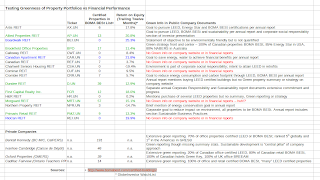Two factors - taxes and debts, such as a loan or mortgage - can dramatically alter your asset allocation. Beware, what you see may not actually be what you have! This week, we'll explore the effect of tax.
Now that the cumulative TFSA contribution limits are reaching substantial amounts (4 years already at $5000 per year plus a just-announced higher amount of $5500 for 2013, making $25,500 in total), it is likely many investors will have investments spread through TFSAs, RRSPs and perhaps non-registered taxable accounts as well.
Taxation differs amongst account types!
TFSA - The entire value within such an account is tax-free. Neither the principal / initial value / contributions nor any accumulated returns of whatever type, such as capital gains, interest and dividends is taxable. There is no tax along the way, year by year or upon withdrawal. TFSAs are wonderfully simple - what you see in your account is what you have to spend at any time.
RRSP (or other registered retirement accounts like LIRA, LRIF) - The entire value of these accounts is taxable upon withdrawal. Think of this as the fact that the government is your partner and owns part of your RRSP (read Retail Investor.org's Nitty-Gritty of the RRSP Model for a cleverly presented and detailed explanation). The percentage the government owns is the percentage of your marginal tax rate at withdrawal, which varies by province and income level (rates available from Ernst & Young's tax calculator). Everything is taxed at the rate for ordinary income, which is the highest marginal rate. It doesn't matter what type of gains were made (capital gains, interest, dividends), withdrawals are taxed as ordinary income. Taxes are only applied upon withdrawal, not year by year along the way. This makes our estimation a bit uncertain since it is hard to know what your exact tax rate may be in twenty years during retirement given all the possible future changes from government or your own circumstances.
The point remains, however, that a big chunk of an RRSP balance is not yours to spend, nor do the asset balances or allocations within represent what you have in reality after taxes. For instance, Ernst & Young's tax tables tell us that a Manitoba taxpayer with $80,000 taxable income will pay about 39% of an RRSP balance to the government and thus only owns 61%.
This could be very significant if you have followed the oft-cited advice to put all fixed income assets into the RRSP only, as we show in our example below. Your net real after-tax asset allocation could be quite different from what you intend.
Taxable - Interest, dividends and distributed capital gains (such as from ETFs or mutual funds that will show up on T-slips issued by providers or brokers) get taxed all along the way year by year. That part is simple and straightforward - there is no looming tax liability and no adjustment required to see net ownership or asset allocation. However, another part is not so simple. Capital gains that have accumulated through price increases of any security over its Adjusted Cost Base (see previous post on ETFs and Mutual Funds: Calculating Capital Gains) are not taxable year by year. Buy and hold investors who keep the same investment without selling for years may well have a substantial capital gains tax liability. That tax liability does reduce net amounts so an asset allocation adjustment is required.
Example
Let's use a Saskatchewan taxpayer at the $80,000 taxable income bracket. The tax rate on ordinary income is 35% and on capital gains is 18%. Furthermore, the portfolio is spread across a TFSA, a RRSP and a Taxable account. All of the fixed income bonds are in the RRSP. We'll assume the investor has made, but not yet cashed in, a $5000 capital gain in equities held in the Taxable account.
The investor wants to have a balanced portfolio 50% in each of equities and bonds. But that's not the reality after tax. Equities actually make up 56% of the portfolio.
The fix is simple enough. Rebalance to reflect taxes - boosting the bond holdings in the RRSP by selling some of the equities will shift the portfolio to the intended allocation.
The other, probably sobering, implication to the tax adjustment is that the investor has considerably less - $53,400 or 27% less - money to spend in reality than the account balances would seemingly indicate. As ever, it's better to face this unpleasant reality than ignore it.
One thing this tax adjustment does not suggest is that TFSAs or Taxable accounts are better than RRSPs, despite the zero or much smaller adjustment. TFSAs and RRSPs in principle give the exact same tax advantage. We note this and discuss other account comparison and choice factors in one of our most popular posts - RRSP vs TFSA vs RESP vs Non-Registered Taxable Account?
Next week, we'll explore the effect of debt on asset allocation.
Acknowledgement: This post idea originated in Bill Reichenstein's Tax-Efficient Saving and Investing from the TIAA-CREF Institute website.









